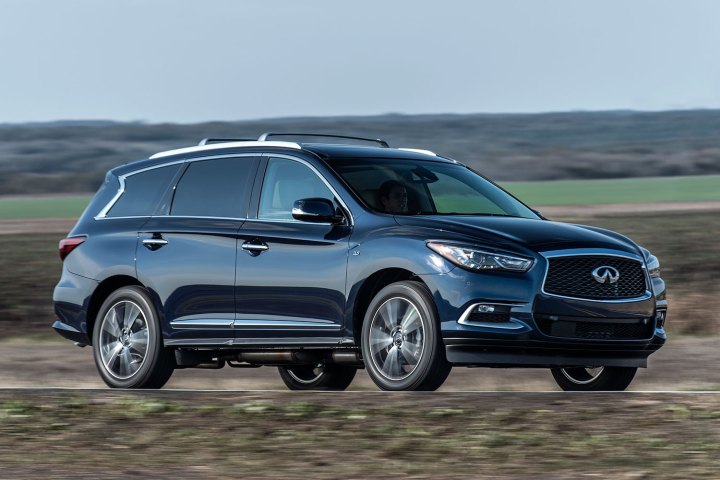
The biggest news for the 2017 model year is under the hood. The QX60 receives a new 3.5-liter V6 engine equipped with direct fuel-injection and electronic valve timing control. The six-cylinder generates 295 horsepower and 270 pound-feet of torque. In comparison, last year’s model uses an older 3.5-liter V6 tuned to provide 265 horses and 248 pound-feet of twist.
The QX60’s six continues to shift through a continuously variable transmission (CVT). Front-wheel drive comes standard, and all-wheel drive is found on the list of options. Performance and fuel economy figures haven’t been announced yet.
Inside, the passengers benefit from the latest generation of Infiniti’s InTouch infotainment system. Navigation and voice recognition are both found on the list of options. Other notable extra-cost add-ons include the $2,150 theater package, which adds a pair of eight-inch monitors for the passengers sitting in the second row, a 12-volt power outlet, a USB port, and a HDMI port. The theater package is best enjoyed when ordered with in-car Wi-Fi, which is a $450 option.
Infiniti gave the QX60 — born as the JX35 back in 2013 — a minor face-lift almost a year ago at the Detroit Auto Show, so the 2017 model carries on without any visual modifications. As a reminder, the updates brought a redesigned front end that borrows styling cues from the Q50 sedan, new tail lamps, and additional alloy wheel designs.
The 2017 Infiniti QX60 is on sale now across the nation. Pricing starts at $43,100 for the front-wheel drive model, while selecting all-wheel drive bumps that figure up to $44,900. Its closest rivals are the Acura MDX, the Audi Q7, and the Volvo XC90.



